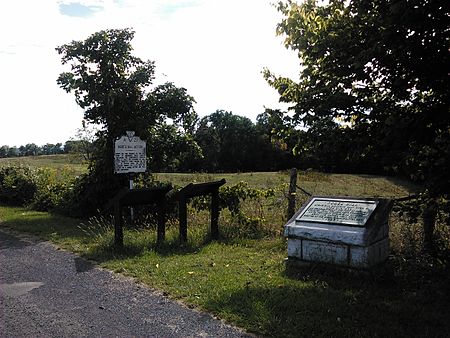Rude's Hill

Rude's Hill is a 981-foot hill just outside of the town of Mt. Jackson in Shenandoah County, Virginia, United States, primarily known because it was a strategically placed elevation on which many Civil War events occurred. It was named after the Danish Lutheran minister Anders Rudolph Rude, who arrived in the US in 1836 and married the widow of the Steenbergen plantation. They inhabited a house on the hill called "Locust Grove" which dates to 1792, according to county records. As of July 2014 when the property was for sale, "Locust Grove" was in severely neglected condition with several ungainly exterior modifications over the years, but was still standing. Rude's Hill was an important site in the American Civil War, occupying a commanding high point overlooking the key Valley Turnpike where is passes through a point between Smith Creek on the east and the North Fork of the Shenandoah River on the western side. Rude's Hill is the first elevation on that route beyond the flat Meems bottomland on the south end of the town of Mt. Jackson. It was a particularly defensible high ground because the only practical enemy approach to Rude's Hill was from the north was via single bridges spanning Mill Creek and the Shenandoah's north fork, after which an enemy would need to cross the broad, flat Meems Bottom, commanded by Rude's Hill beyond. And also because if required to retreat, a force could withdraw from Rude's Hill through mountain passes of the Massanutten Range. Because of its strategic placement and high ground location on the Valley Pike and the fact the area had so much action between 1862 and 1865, Rude's Hill figured prominently in the Civil War history of the Shenandoah Valley.
Excerpt from the Wikipedia article Rude's Hill (License: CC BY-SA 3.0, Authors, Images).Rude's Hill
Old Valley Pike,
Geographical coordinates (GPS) Address Nearby Places Show on map
Geographical coordinates (GPS)
| Latitude | Longitude |
|---|---|
| N 38.702222222222 ° | E -78.644722222222 ° |
Address
Old Valley Pike
Old Valley Pike
22842
Virginia, United States
Open on Google Maps








